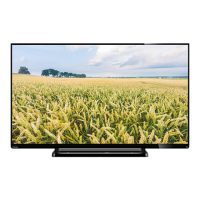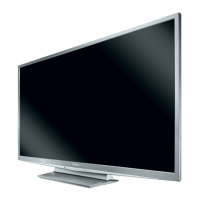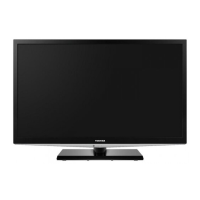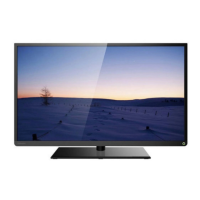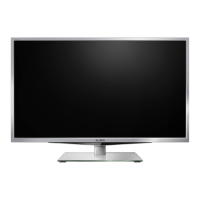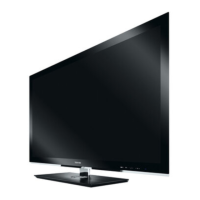Overview
of
cable
types
Cables
can
be
purchased from most stores that sell audio/
video devices. Before purchasing
any
cables,
be
sure of
connector types required
by
your devices and the length
ofeach cable.
Coaxial
(F-type)
cable
~{l()"'----
Coaxial (F-type) cable
is
used for connecting your
antenna, cable TV service, and/or cable converter box
to the
ANT/CABLE
input on your
TV.
Standard
AN
cables
(red/white/yellow)
~~
~
~-------
~
Standard
AN
cables (composite video) usually come
in
sets of three,
and
are
for
use
with video devices with
analog audio and composite video output. These cables
(and
the
related inputs
on
your TV) are typically color-
coded according to use: yellow for video,
red
for stereo
right audio, and white for stereo left (or mono) audio.
Component
video
cables
(red/green/blue)
~!7
~
~-------
~
Component video cables come
in
sets of three and are
for
use
with video devices with component video output.
(ColorStream@
is
Toshiba's brand of component video.)
These cables are typically color-coded red, green, and
blue. Separate audio cables are required for a complete
connection.
Note: Component video cables provide better
picture performance than a standard (composite)
video.
HDMI®
cable
(with
HDMI
Logo
"HLJm."")
~~
HOMI (High-Definition Multimedia Interface) cable
is
for use with devices with
an
HDMI output.
An
HDMI cable delivers digital audio and video
in
its
native format. This cable carries both video and audio
information; therefore, separate audio cables are not
required for a complete HDMI device connection
(1&
page
16
and page
19).
Note: HOMI cable provides better picture
performance than a standard (composite) video.
Optical
audio
cable
IQ1
~a-----
Optical audio cable
is
for connecting receivers
with
Dolby Digital or
PCM
(pulse-code modulation) optical
audio input
to
the TV's
DIGITAL
AUDIO
OUT
terminal
(1& page
18).
Analog
RGB
(1S-pin)
computer
cable
~([[2==
Analog
RGB
(IS-pin) computer cable
is
for connecting
a
PC
to
the TV's
PC
IN
terminal
«((~
page
18).
LAN
cable
O~~---
Standard LAN cable
is
used
to
connect
the
TV
to
your
home network.
(I&' page 20).
About
the
connection
illustrations
You
can
connect different
types
and
brands ofdevices
to
your
TV
in
several
different configurations. The connection
illustrations
in
this
manual
are
representative of typical
device
conne~tions
only.
The input/output tenllinals
on
your devices
may
differ
from
those illustrated
herein.
For
details
on
connecting
and
using your specific devices, refer
to
each
device's owner's
manual.
13
I

